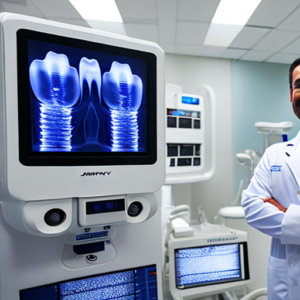Do you experience persistent bleeding gums, bad breath that won’t go away, or unexplained tooth pain? These symptoms can be incredibly concerning, leading to a frantic search for answers and often prompting a visit to the dentist. However, what if your diagnosis isn’t gum disease (periodontitis)? Many seemingly similar issues can stem from other underlying conditions. Understanding the full spectrum of possibilities is crucial for accurate diagnosis, effective treatment, and ultimately, maintaining optimal oral health. This comprehensive guide will delve into the symptoms commonly associated with periodontitis while exploring alternative explanations that might be causing your discomfort.
Understanding Gum Disease Symptoms
Gum disease, or periodontitis, is a serious infection of the gums that damages the soft tissue and bone supporting your teeth. It’s often preceded by gingivitis, which is reversible with diligent oral hygiene. Yet, many people incorrectly attribute all gum-related symptoms to periodontitis. The reality is that several other conditions can manifest with remarkably similar symptoms, leading to misdiagnosis and delayed treatment for the real issue.
According to the American Academy of Periodontology, approximately 75% of adults have some form of periodontal disease by age 65. This highlights just how prevalent this condition is, but it also underscores the importance of recognizing that symptoms aren’t always indicative of a specific diagnosis. A recent study published in the Journal of Dental Research indicated a strong correlation between systemic inflammation and the progression of periodontitis – suggesting a complex interplay between oral health and overall well-being.
Common Symptoms Associated with Gum Disease
- Bleeding Gums: This is perhaps the most recognizable symptom of gingivitis. It’s caused by inflammation and swelling of the gums, making them more sensitive and prone to bleeding when brushing or flossing.
- Bad Breath (Halitosis): Bacteria accumulating in pockets between teeth and gums contribute significantly to bad breath. Periodontitis exacerbates this issue due to the deeper pockets harboring more bacteria.
- Red, Swollen Gums: Visible inflammation of the gum tissue is a hallmark sign of gingivitis.
- Sensitive Teeth: As gums recede, exposing the roots of your teeth, they become more sensitive to hot, cold, and sweet foods.
- Loose Teeth: In advanced periodontitis, bone loss weakens the support for your teeth, leading to looseness and eventual tooth loss.
- Receding Gums: The gums pull back from the teeth exposing more of the root surface.
Other Potential Causes of Similar Symptoms
1. Systemic Inflammation
As mentioned earlier, systemic inflammation – often linked to conditions like rheumatoid arthritis, lupus, and Crohn’s disease – can significantly impact oral health. Inflammatory markers in the bloodstream can exacerbate gum inflammation, mimicking periodontitis symptoms. A case study involving a patient with rheumatoid arthritis experiencing severe gum bleeding revealed that initiating anti-inflammatory medication dramatically improved their gingival condition.
2. Nutritional Deficiencies
Deficiencies in vitamins like C and D play a crucial role in maintaining healthy gums. Vitamin C is essential for collagen production, vital for gum tissue strength. Vitamin D aids in calcium absorption, which is important for bone health – supporting the teeth.
3. Medications
Certain medications can cause dry mouth (xerostomia), increasing the risk of oral infections and contributing to bad breath. Common culprits include antihistamines, diuretics, antidepressants, and some blood pressure medications. Dry mouth reduces saliva flow, which is a natural defense against bacteria and fungi.
4. Temporomandibular Joint Disorders (TMJ)
TMJ disorders can cause pain in the jaw and surrounding areas, sometimes radiating to the gums. The dysfunction of the TMJ can lead to muscle tension and inflammation, directly affecting the oral tissues. A patient experiencing severe gum tenderness alongside jaw clicking and popping was diagnosed with a mild form of TMJ disorder and found relief through physical therapy.
5. Oral Candidiasis (Thrush)
This fungal infection can cause white patches on the tongue and gums, accompanied by soreness and inflammation. It’s often triggered by antibiotic use or weakened immune systems. This condition is frequently mistaken for early stages of gum disease.
6. Rosacea
Rosacea, a skin condition characterized by redness and swelling, can also affect the gums, causing inflammation and sensitivity. Individuals with rosacea often experience heightened sensitivities in their oral mucosa.
| Condition | Key Symptoms Overlapping Gum Disease | Potential Diagnostic Tests |
|---|---|---|
| Systemic Inflammation (Rheumatoid Arthritis) | Bleeding gums, swollen gums, increased sensitivity | Blood tests for inflammation markers (CRP, ESR), joint fluid analysis |
| Medication-Induced Dry Mouth | Bad breath, bleeding gums (due to reduced saliva flow) | Salivary gland function test |
| TMJ Disorder | Tooth pain, gum tenderness, jaw clicking/popping | Physical examination, imaging of the TMJ |
Diagnosis and Treatment – A Multi-faceted Approach
Accurate diagnosis is paramount. Your dentist will likely perform a comprehensive oral exam, including probing for pockets around your teeth to assess bone loss. They may also take X-rays to evaluate the extent of damage. A thorough medical history is equally important to rule out underlying systemic conditions.
Treatment options depend on the severity of the condition. For gingivitis, scaling and root planing (deep cleaning) are usually effective. For periodontitis, treatment may include antibiotics, surgery to regenerate lost bone and tissue, or gum grafting to cover exposed roots. Maintaining good oral hygiene – brushing twice daily with fluoride toothpaste and flossing regularly – is crucial for preventing future problems.
Conclusion
While gum disease (periodontitis) is a significant concern, it’s vital to recognize that symptoms like bleeding gums and bad breath can be indicative of other underlying issues. A holistic approach combining diligent oral hygiene with careful consideration of potential systemic factors is essential for accurate diagnosis and effective treatment. Don’t self-diagnose; seek professional advice from a qualified dentist or periodontist.
Key Takeaways
- Many conditions can mimic gum disease symptoms.
- Systemic inflammation plays a significant role in periodontal health.
- Medications and nutritional deficiencies can contribute to oral problems.
- Accurate diagnosis requires a comprehensive evaluation, including medical history.
- Consistent oral hygiene is vital for all patients, regardless of the underlying cause.
Frequently Asked Questions (FAQs)
- Q: Can gum disease be reversed? A: Gingivitis can often be reversed with diligent oral hygiene and professional cleaning. However, advanced periodontitis may require surgical intervention.
- Q: Is bad breath always caused by gum disease? A: No, bad breath (halitosis) can have numerous causes, including dry mouth, tongue coating, sinus infections, and other systemic conditions.
- Q: How does smoking affect gum disease? A: Smoking significantly increases the risk of developing gum disease and hinders its treatment. It impairs immune function and reduces blood flow to the gums.
- Q: What can I do at home to prevent gum disease? A: Maintain excellent oral hygiene by brushing twice daily, flossing regularly, eating a healthy diet rich in vitamins and minerals, and avoiding tobacco products.
















